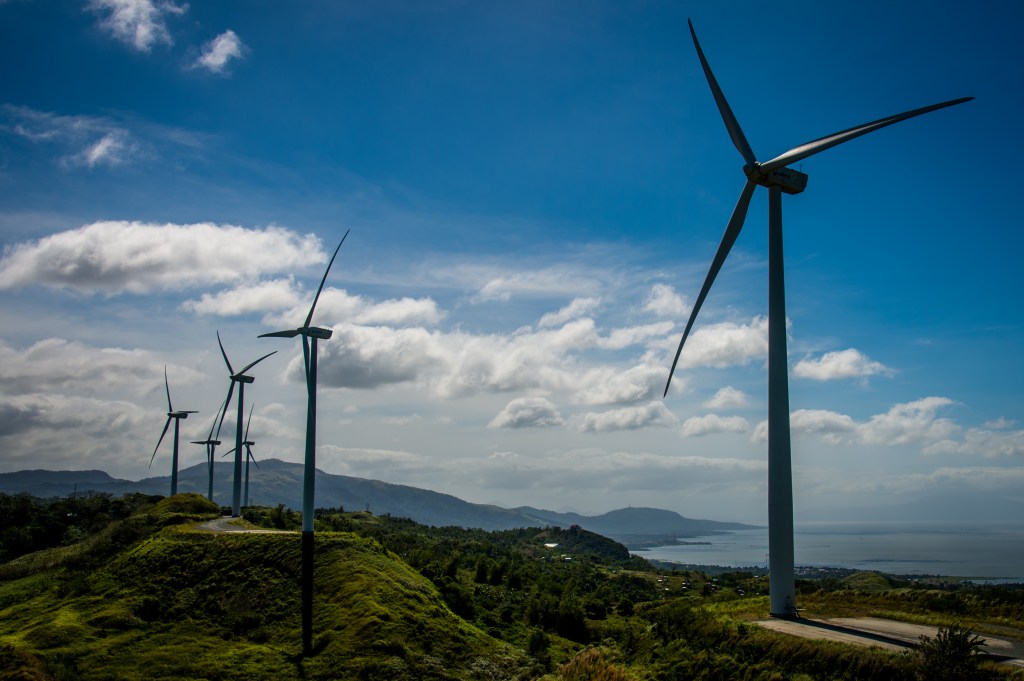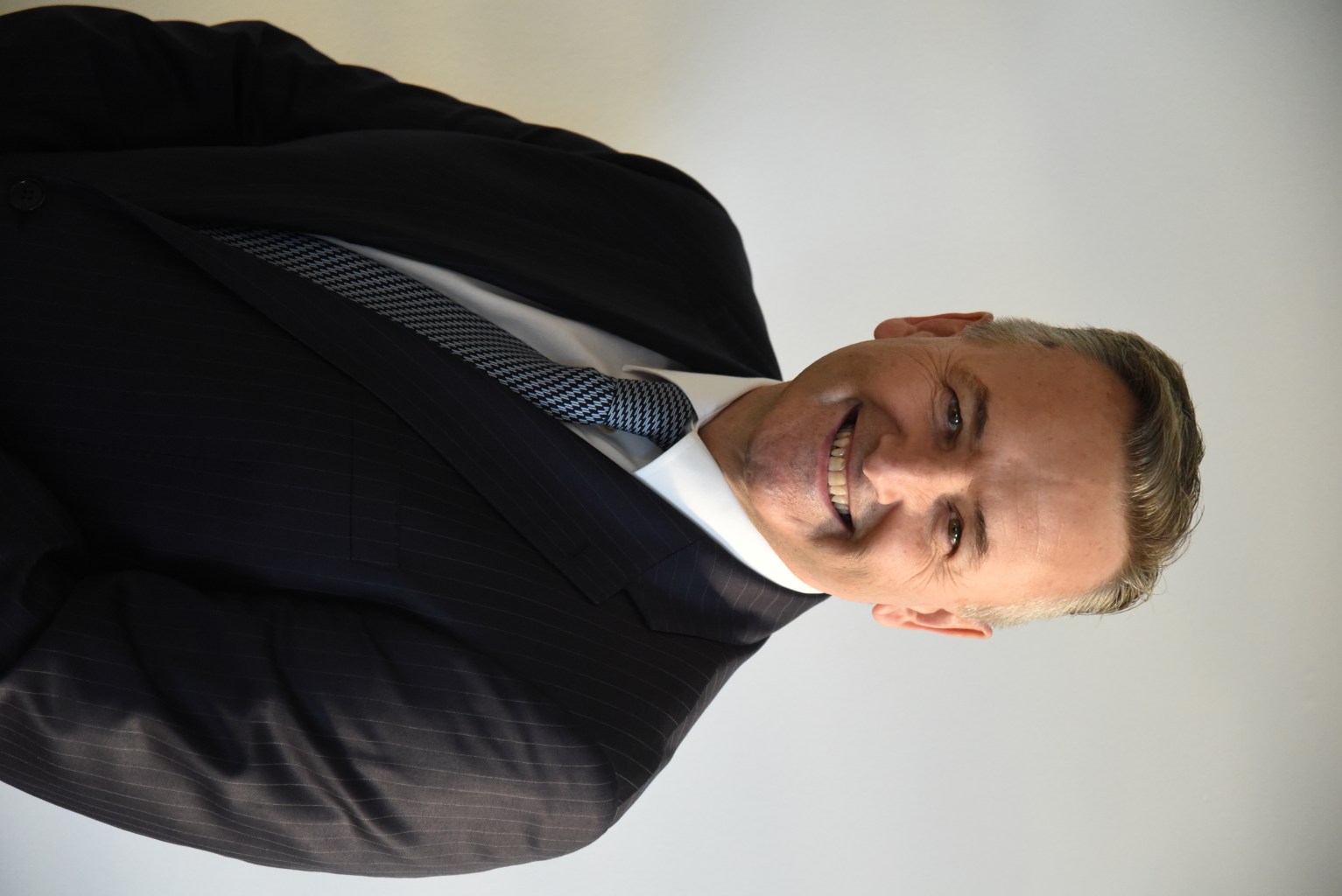Quinbrook co-founder David Scaysbrook is mad as hell about the Australian financial community’s lack of interest in renewables.
Key Takeaways
- Renewables developer Quinbrook has a further $4bn-$5bn of deals in the pipeline
- New emissions reduction target of 43% from 2005 levels by 2030, combined with a commitment to 80% renewables in the electricity mix by 2030, have “fundamentally changed the investment outlook”
- Quinbrook’s Net Zero Power Fund is expected to raise $5bn

Prolific renewables developer Quinbrook has a further $4bn-$5bn of deals in the pipeline, as co-founder David Scaysbrook warns risk-averse local institutions could be swamped by offshore rivals in the nation’s green-energy “superpower” opportunity.
Back home after a successful global investor roadshow, Scaysbrook told Forbes Australia that superannuation funds in charge of the world’s fourth-biggest pool of capital were the “hardest to mobilise on the planet, by a long stretch”.
“If you don’t get off your arses and allocate in your own backyard, then when the hell are you ever going to do it?” he says. “I’m not going to hide my light under a bushel; I’m bloody frustrated with the Australian financial community.
“They all talk such a good game, but where’s the deployment – they’re underweight in renewables and climate-themed infrastructure investment relative to all their global peers, with the exception of some redneck public pension funds in places like Oklahoma and Texas.”
Scaysbrook said the new Albanese government’s more ambitious emissions reduction target of 43% from 2005 levels by 2030, combined with a commitment to 80% renewables in the electricity mix by 2030, had fundamentally changed the investment outlook.
For the first time in more than a decade, there was a compelling reason to allocate capital to the Australian market not only to decarbonise the economy but also to become a renewables superpower.
The opportunity was “very, very real, not in any way illusory”.
“But guess what? Every other (fund) in the world has woken up to the fact that Australia is now ‘game on’,” Scaysbrook said.
“So they’re coming here with force, and I’m helping to bring them here. “We now have a genuine reason in this country to allocate a tonne of money to nation-building projects in transmission, green power production, green industry and it’s unprecedented, but it needs Australian institutions to get the cheque books out.
“There are no excuses any more. This is real. And it’s big.”
– Quinbrook co-founder David Scaysbrook
Scaysbrook’s enthusiasm has been reinforced by a tour of financial capitals to rattle the can for Quinbrook’s Net Zero Power Fund, which is expected to raise $5bn.
While the Quinbrook founder can’t talk about the progress of the offer under US law, word leaked out last month that the Oslo-based pension fund KLP had committed $300m as part of its ambition to invest $US1bn-a-year in green projects.

Scaysbrook and co-founder Rory Quinlan have invested in renewables for more than 25 years and in power infrastructure more broadly since the early 1990s.
After establishing Quinbrook in 2015, the company has emerged as one of the world’s leading renewable energy developers, boasting more than $3bn in assets under management and more than $10bn in total equity invested since formation.
The strategy is simple and unwavering, with a focus on value-added investment in infrastructure for the world’s energy transition, but only in the developed markets of the US, UK and Australia.
Quinbrook invests at both a project level and in private equity-style platform building, unlike most of its rivals which concentrate on one or the other, although they might struggle to match the company’s targeted returns in the high-teens; sometimes higher.
“We stick to our knitting, which is all about knowing a good site, knowing a good business opportunity, and trying to look down the road a little bit to see how the markets are changing and where interesting opportunities might be emerging,” Scaysbrook says.
“We don’t do ports, we don’t do toll roads, we don’t do anything but power, so our entire attention is devoted to the industry dynamics, like price formation and what politicians are getting worried about.
“We’re seeing that now with energy poverty in Europe. They’re going to start changing the rules.
“If you’re a specialist investor and you’re focused only on that, you’ve got a better chance of not only spotting where the opportunities are but also avoiding the pitfalls.”
Eye-catching deals
In recent weeks, the company has peeled off a sequence of eye-catching deals, starting with the $US1bn sale of wind-power producer Scout Clean Energy to Canadian group Brookfield.
Quinbrook acquired Scout as a startup for a piddling $US6m in 2017.
Since then, it has deployed a further $US470m in equity from its managed funds as Scout built 1200MW of wind projects in four states, including 400MW managed on behalf of third parties.
The attraction for Brookfield was Scout’s development pipeline, with plans to deliver more than 22GW of wind, solar and storage projects across 24 states by the end of the decade.
Then, in mid-October, the portfolio company Primergy Solar announced the sale of a minority, 49 per cent equity stake in its $US1.2bn Gemini solar and storage project outside Las Vegas to APG, the biggest pension asset manager in the Netherlands.
Gemini is the largest solar and storage project under construction in the US, and once it becomes operational next year is expected to generate enough clean energy to power more than 400,000 homes during peak periods and displace more than 1.5m metric tons of carbon dioxide a year.
What’s next?
The question for Scaysbrook, of course, is what’s next? Unsurprisingly, the short answer is quite a lot, with about $4bn-$5bn of deals in different forms looming on the horizon.
First, a large data centre operator in the US is on the cusp of inking power deals from three of the group’s solar projects and its Primergy platform.
A couple of deals in the green data-centre portfolio are also nearing completion, following Quinbrook’s launch in Brisbane last July of a $2.5 billion data storage project, to be powered by renewables and battery storage.
Data centres, which help businesses store, organise and operate data efficiently, are also massive consumers of energy, with power accounting for about 40 per cent of their cost bases and an astonishing two per cent of global greenhouse gas emissions.
The new deals will be the catalyst for transformation of what is currently a Quinbrook portfolio business into a platform business.
In distributed energy, the group is expanding its Energy Locals business in Australia into the US, supplying various communities with battery storage, electric vehicle-charging and broadband assets.
“It’s a community energy model and we manage all those assets in what we call a virtual power plant,” Scaysbrook says.
“So we manage them as if it was one big source of power supply and demand – a new tech-driven capability. It’s working well for us in Australia and we’re going to take the model to the US.”
Finally, Quinbrook will soon announce it has secured a further two synchronous condensers in the UK to support the stable decarbonisation of the electricity supply as the commitment to renewables accelerates.
The group is now the largest private owner of synchronous condensers in the western world, with the first of seven commissioned in Wales a few months ago.
Full commissioning will require the deployment of about $800m in equity.
Caution about ‘unlimited’ capital
Scaysbrook, however, cautioned against the widespread assumption that there is unlimited capital available to facilitate the transition to net zero by 2050.
“There’s a complete misconception around that – it’s still a job to convince institutional investors to invest in asset creation,” he said.
“You still have to convince them of the risk/reward opportunity in taking on development and construction risk.
“Fortunately for us, these two deals we’ve just announced, both of which achieved stellar returns, have been really important, not just for us but for investor education.
“They don’t believe anything until they see it in hard cash. That’s why track record really matters. It’s one thing to say I’ve got a target of 20% but it’s quite another to say: ‘Here’s your 20%. And let’s do it again. Rinse and repeat.”
The reality, he said, was that most renewables strategies only delivered internal rates of return in the high single-digits.
Quinbrook was able to offer more because it took on the development risk, albeit with a heavy focus on risk management.
In the recent roadshow, Scaysbrook said he told investors that deployment of future funds might shrink to zero in the UK, with the allocation to Australia perhaps doubling to 40% and the US accounting for the remainder.
The UK, he said, did not have the same level of renewables endowment as Australia, particularly in solar and storage which Quinbrook regarded as the most potent technological combination.
“Unlike in the US where we can do 10 Geminis, we can probably only do one or two (in the UK), so the deal sizes and level of deployment in the UK is smaller relative to Oz.
“And now that we’re going to take the wrappers off the big green superpower opportunity, Australia is looking at export industries that are going to require Gemini-type projects to be developed in WA and Queensland, which go well beyond our little power system.
“So that means that Oz is now a sizable player for hosting these domestic large scale projects.”
If political gridlock had compounded the difficulty of renewables investment in Australia over the 10 years, Scaysbrook said there was now a wellspring of opportunity.
“The next 10 years in Australia is significant on a global scale, and everyone in the world is seeing that,” he said.
“Just like the US is now the best market in the world for what we do, Australia is actually not out of the reckoning.”